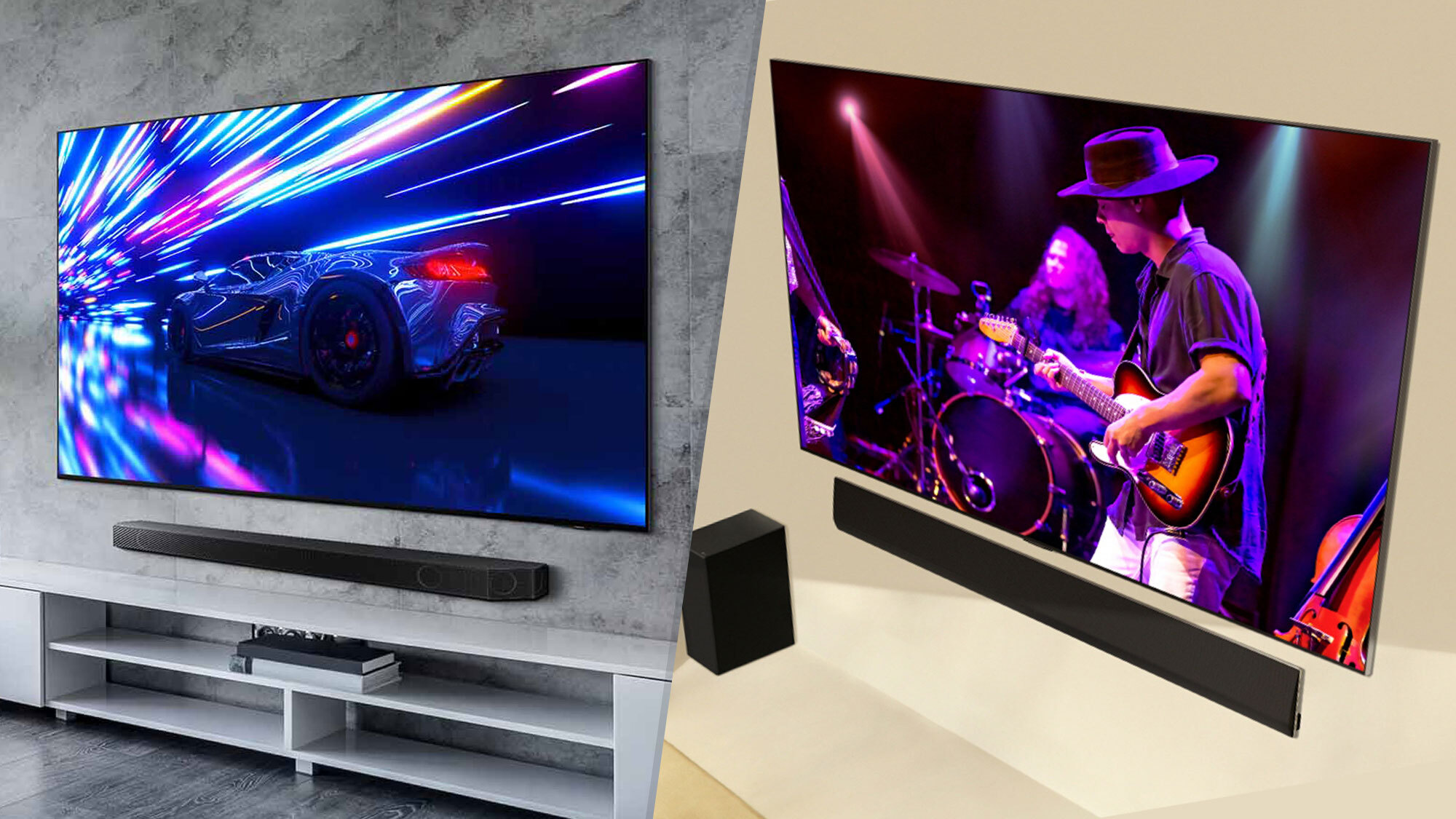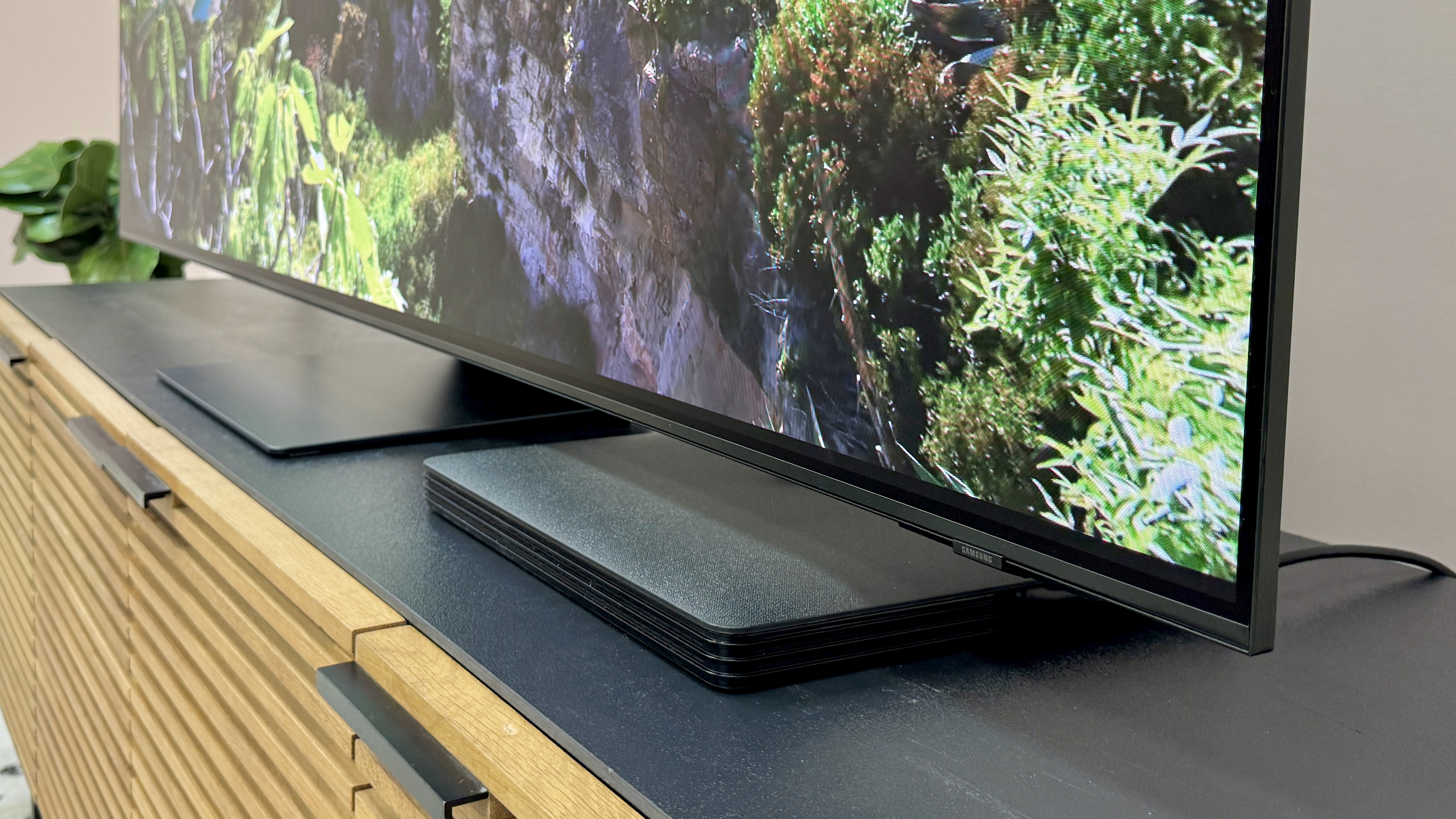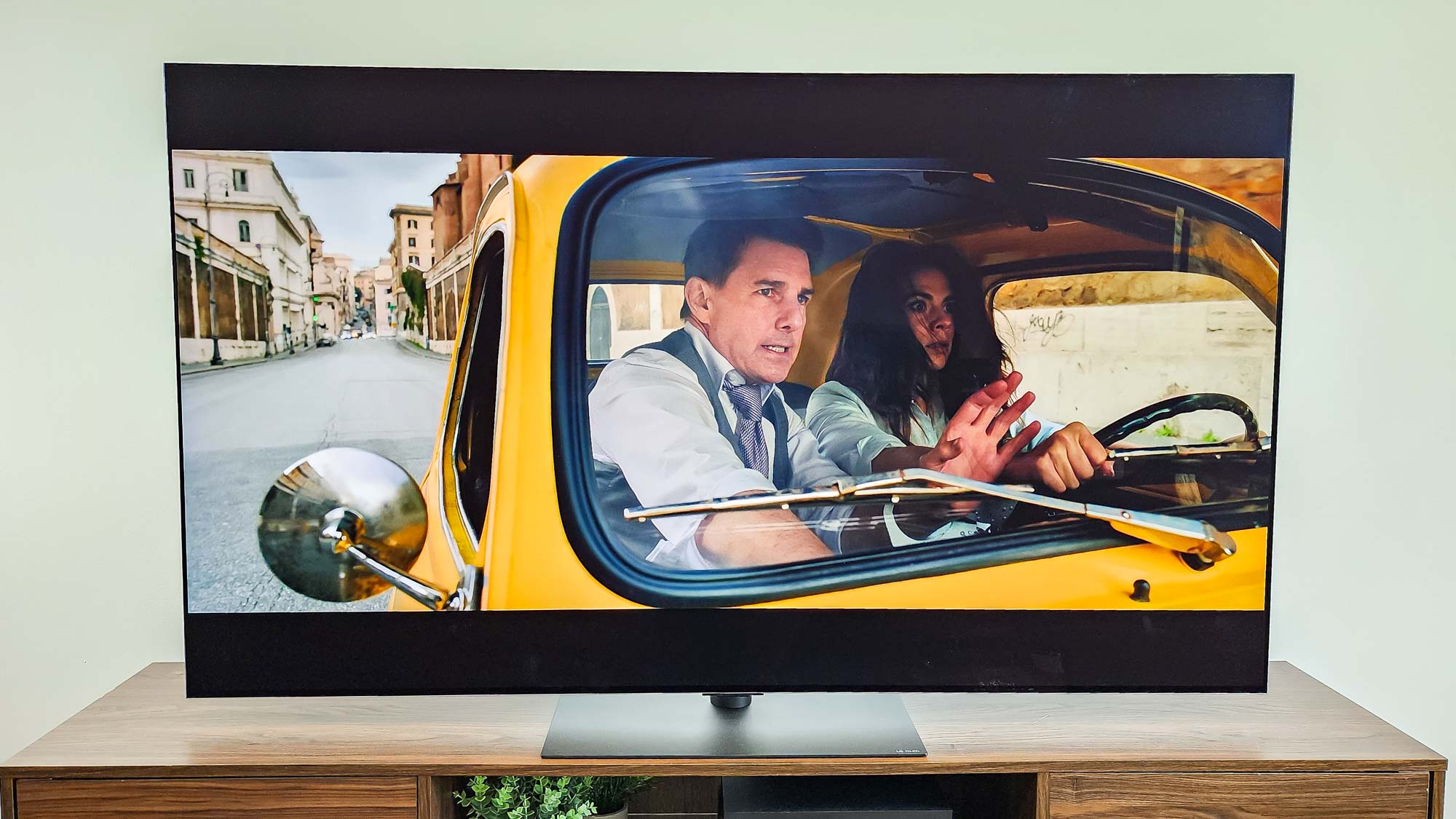Samsung S95D OLED vs LG G4 OLED: Which OLED TV wins?

If you have the money to spend on them, there's really only two options out there when picking the best OLED TV of 2024: It's either the Samsung S95D OLED or the LG G4 OLED. It makes sense. They’re both incredible TV sets with stunning image qualities and modern premium designs. They come at a similar price, too, and offer high-end features that gamers and movie watchers alike can enjoy.
The LG G4 OLED, obviously, is an OLED TV and uses LG Display's latest Micro Lens Array (MLA) OLED panels. Although it's based on a slightly different design, the Samsung S95D also makes use of an OLED panel, albeit one that uses a quantum dot filter to enhance colors and brightness. The result is that both TVs can deliver those deep, natural, inky black levels with pixel-by-pixel control over the lighting.
But is one actually better than the other? We’ve conducted a range of tests in our lab to find out if the Samsung S95D or the LG G4 OLED is better. Here’s a look.
Samsung S95D vs LG G4 OLED: Specs compared
| Row 0 - Cell 0 | Samsung S95D | LG G4 OLED |
| Sizes | 55”, 65”, 77” | 55”, 65”, 77”, 83”, 97” |
| Ports | 4 HDMI 2.1 | 4 HDMI 2.1 |
| Resolution | 3,840 x 2,160 | 3,840 x 2,160 |
| HDR | HDR 10, HDR 10+ | HDR10, Dolby Vision |
| Smart TV software | Samsung Tizen | LG WebOS |
| ATSC 3.0 support? | No | No |
| Processor | NQ4 AI Gen2 Processor | Alpha 11 AI Processor |
| Price for a 65-inch screen | $3,399 | $3,399 |
Samsung S95D vs LG G4 OLED: Design
Both the Samsung S95D and LG G4 OLED offer premium designs that will look great in any living room, but the approach to design is slightly different.
When LG first launched the LG Wallpaper TV, I thought it would move more in that direction for more of its TVs. But the LG G4 OLED is a little more traditional than that. The TV is very thin, but it’s all one TV set, with the HDMI ports on the left side as you look at the display. It can be mounted on a wall and look great, or you can use it with the included stand, which also looks premium and modern.

Samsung has taken a slightly different approach, though. When you set the TV up with the stand, it’ll look a lot like the LG G4 OLED, with a foot in the center of the display. But in recent years, Samsung has started adopting the external box approach with its OneConnect box. The OneConnect box essentially houses everything but the actual display technology needed in the screen itself, including the processor and all of the ports. The result? The screen is incredibly thin, and when mounted on a wall, it looks very premium and sits very flush.
Even if you don’t mount the display to a wall, the approach still allows for a very premium look. In this situation, the OneConnect box simply sits on the back of the stand, and you’ll still get the advantages of a very thin TV.
Get instant access to breaking news, the hottest reviews, great deals and helpful tips.

Don’t get me wrong, the LG G4 OLED is a very premium-looking TV. But Samsung’s approach to premium TV design with the OneConnect box makes the S95D a little more versatile and look that extra bit more modern.
Of course, there is another major area in which the TVs differ in design. The Samsung S95D is available in 55-, 65-, and 77-inch models. The LG G4 OLED is also available in those sizes, plus in an 83-inch and 97-inch size. In other words, if you’re looking for a really large TV, you might need to go for the LG.
Winner: Samsung S95D
Samsung S95D vs LG G4 OLED: Performance
In terms of performance, where these TVs differ is in how they achieve a higher level of brightness. LG uses a combination of AI and Next Generation Micro Lens Array, or MLA tech, to achieve a higher level of brightness. Samsung, on the other hand, uses quantum dot technology to deliver more brightness and more vivid colors. Both approaches are effective.

There are some differences in how the TVs approach HDR, though. Samsung notoriously does not license Dolby Vision for its TVs, and as such, the Samsung S95D doesn’t support Dolby’s HDR format. That said, you will still get excellent HDR performance with HDR10+. The LG G4 OLED does support Dolby Vision.
To put the two TVs through their paces, we use an X-Rite i1 Pro Spectrophotometer, a SpectraCal VideoForge Pro Pattern Generator, and the Calman TV-calibration software from Portrait Displays.
| Row 0 - Cell 0 | Samsung S95D | LG G4 OLED |
| SDR Brightness (10%, in nits) | 276 | 358 |
| Delta-E (lower is better) | 3.5085 | 1.4041 |
| Rec. 709 Gamut Coverage | 99.8042 | 98.5546 |
| HDR Brightness (10%, in nits) | 1777 | 1488 |
| UHDA-P3 Gamut Coverage | 99.97 | 97.17 |
| Rec. 2020 Gamut Coverage | 89.73 | 72.91 |
| Input Lag (ms) | 9.2 | 9.2 |
Most modern streaming content supports HDR, but you still might watch SDR content from time to time, especially if you like watching older movies or older sitcoms like The Office or Seinfeld. Our testing showed that LG’s approach to higher OLED brightness is more effective when viewing SDR content, and the LG G4 OLED delivered 358 nits of brightness compared to the S95D's 276 nits.

Samsung was able to get brighter when viewing HDR content, though. The S95D reached 1,777 nits of brightness in our HDR brightness test compared to 1,488 on the LG G4 OLED. This means that those HDR highlights will pop a little more, which should help make for a more impressive image overall.
Samsung’s quantum dot technology has other advantages too though. Notably, the Samsung S95D was able to produce more colors, and delivered 89.73% of the REC 2020 gamut compared to the LG G4 OLED’s 72.91%. But while the Samsung S95D delivered more colors, the colors that the LG G4 OLED did produce were more accurate – and it fared better in our Delta-E test, which measures overall color accuracy.
All this to say that the LG G4 OLED offers a higher brightness for SDR content and displays colors a little more accurately, but the Samsung S95D produces more brightness in the highlights in HDR mode, which makes for a higher level of contrast.
Winner: Tie
Samsung S95D vs LG G4 OLED: Outlook
You really can’t go wrong with either of these TVs. They’re both among the best TVs you can buy in 2024, and they’ll both produce a stunning image overall. They also come at a similar price, making it a real toss-up as to which one you should go for.
While there’s no clear winner, based on our tests, for most users, the Samsung S95D is perhaps the better pick. The improved HDR brightness will make a difference when watching modern content, plus the TV’s ability to produce more colors will play into a more impressive viewing experience. And, we’re partial to Samsung’s approach to design for this generation of TVs. Again, though, both are stunning TVs.
The big exception to that rule, of course, is if you want a really big TV. While the largest Samsung S95D model is 77 inches, the LG G4 OLED ranges up to 97 inches. It doesn’t come cheap, but if you have some money to burn and want a huge TV with a stunning image, the LG G4 OLED is the way to go.

Christian de Looper is a freelance writer who has covered every facet of consumer tech, including mobile, audio, home theater, computing, gaming, and even car tech. At Tom’s Guide, Christian covers TV and home theater tech, and has reviewed dozens of TVs, soundbars, and A/V receivers, including those from the likes of Samsung, Hisense, TCL, and Vizio.
